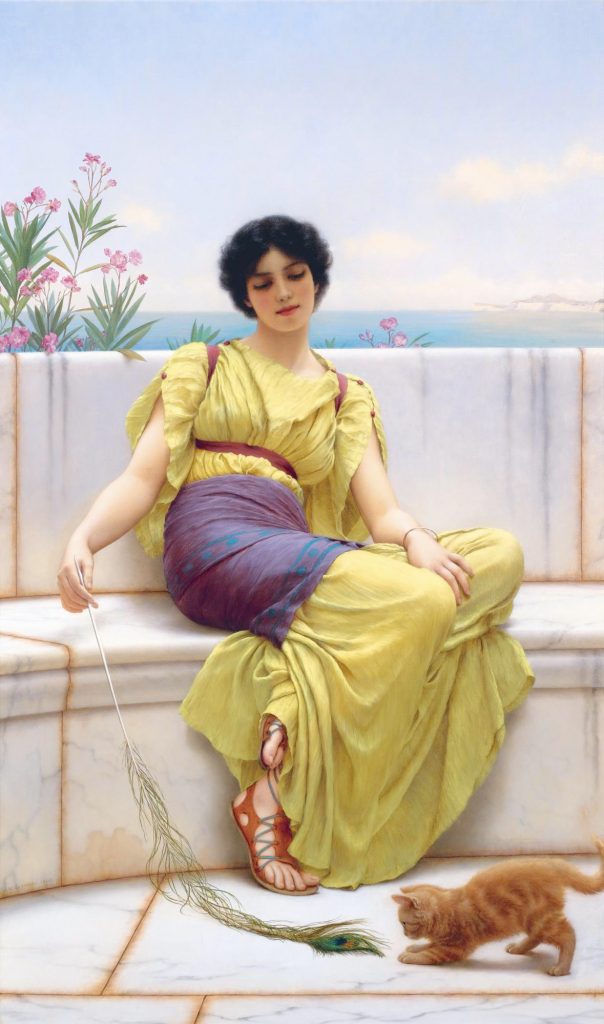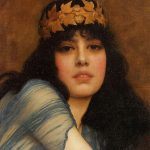
Godward was a Victorian Neo-Classicist, and therefore, in theory, a follower of Frederic Leighton. However, he is more closely allied stylistically to Sir Lawrence Alma-Tadema, with whom he shared a penchant for the rendering of Classical architecture — in particular, static landscape features constructed from marble.
The vast majority of Godward’s extant images feature women in Classical dress posed against landscape features, although there are some semi-nude and fully nude figures included in his oeuvre, a notable example being In The Tepidarium (1913), a title shared with a controversial Alma-Tadema painting of the same subject that resides in the Lady Lever Art Gallery.
The titles reflect Godward’s source of inspiration: Classical civilization, most notably that of Ancient Rome (again, a subject binding Godward closely to Alma-Tadema artistically).
Given that Classical scholarship was more widespread among the potential audience for his paintings during his lifetime than in the present day, meticulous research of detail was important in order to attain a standing as an artist in this genre.
Artist and Archaeologist
Alma-Tadema was an archaeologist as well as a painter, who attended historical sites and collected artifacts he later used in his paintings: Godward, too, studied such details as architecture and dress, in order to ensure that his works bore the stamp of authenticity.
In addition, Godward painstakingly and meticulously rendered other important features in his paintings, animal skins (the paintings Noon Day Rest (1910) and A Cool Retreat (1910) contains examples of such rendition) and wildflowers (Nerissa (1906) and Summer Flowers (1903) are again examples of this).
The appearance of beautiful women in studied poses in so many of Godward’s canvases causes many newcomers to his works to categorize him mistakenly as being Pre-Raphaelite, particularly as his palette is often a vibrantly colorful one.
The choice of subject matter (ancient civilization versus, for example, Arthurian legend) is more properly that of the Victorian Neo-classicist. However, it is appropriate to comment that in common with numerous painters contemporary with him, Godward was a ‘High Victorian Dreamer’, producing beautiful images of a world which, it must be said, was idealized and romanticized, and which in the case of both Godward and Alma-Tadema, came to be criticized as a world-view of ‘Victorians in togas’.
Godward “quickly established a reputation for his paintings of young women in a classical setting and his ability to convey with sensitivity and technical mastery the feel of contrasting textures, flesh, marble, fur and fabrics.”
Godward’s penchant for creating works of art set in the classical period probably came from the time period in which he was born. The last full-scale classical revival in western painting bloomed in England in the 1860s and flowered there for the next three decades.
“Idleness,” Source: Wikipedia.




